The cold and snow of winter makes everything seem quieter. There’s less movement on campus as the sounds of fall slink away under the season’s icy blanket. People crave movement, and often I feel myself associating the lack of visible movement in winter as a lack of life.
This past Monday, my lab class loaded us onto a bus and we trekked out to the Bolton area to scour the snow for any signs of that thing we had all been craving, life. After spending hours following rabbits, deer and dogs across the freshly laid snow, we were still frozen by the icy bite of winter.
I scheduled my first Salmon Hole date of the season for this morning, nearly dreading the frigged walk to visit my dear friend. The idea of going without another human, another visible sign of life, I wasn’t sure I would make it. So, I grabbed one of my best friends from high school, Caleb, and we set off for Salmon Hole.
On our walk down to Salmon Hole I told Caleb about our morning objectives; find prints, identify them, find twigs, identify them. This whole conversation about identifying the beings of Salmon Hole reminded me of Robin Kimmerer. I shared with Caleb her stories of the beautiful complexity of our relationship with nature. Slowly the icy coating my brain began to melt as I remembered what I wrote in my last blog, “Nothing but Names on the Namaskik,” the beings surrounding me at Salmon Hole were not a bunch of “its” to study, but my kin.
We set out around 9am this morning, the earliest time in the day that I’ve visited. Despite my understanding that birds are most active in the morning hours, I was shocked by what, or who, we walked into.
Call after call, Salmon Hole was a bright symphony of birds. Life endures.
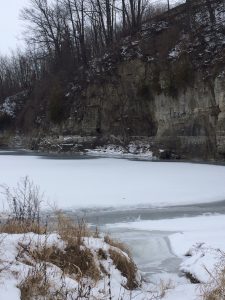
(Palmer, 2017)
Our snow boots crunched across the leaf litter and snow, as we played hide and seek, searching for any signs of our kin. Before long we stumbled upon a sprightly track, darting back and forth, up and down across the snow covered ground.
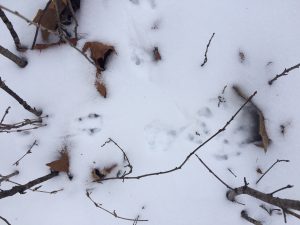
(Palmer, 2017) This picture clearly depicts the galloper print, along with the tail drag. Additionally, to the right there is a hole the mouse’s tracks disappeared into.
The prints were evidently that of a galloper, and tiny as can be. It didn’t take long before I was confident that our friend was of the mouse variety. Our mouse played a fair game of hide and seek, as we tracks disappearing into holes leading to protected subnivean zone.

(Palmer, 2017)
We found ourselves amazed by the clarity of the mouse’s tracks, and at the rate the mouse seemed to be darting back and forth across the snow. Another sign of life.
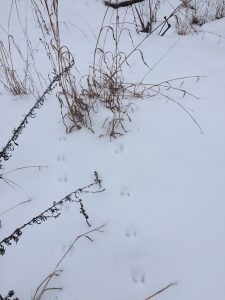
(Palmer, 2017)
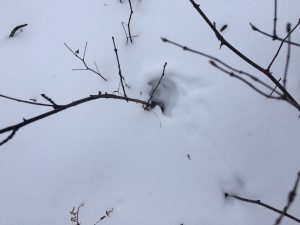
(Palmer, 2017) A hole to the subnivean zone that our mouse seemed to frequent.
My limbs grew cold, but my heart and brain were focused on the warmth and hope of life surrounding me. Caleb too filled with the excitement of getting to know our friends.
There is hope in a tree’s twig. These beings hold the everlasting promise that spring will surely come, and life will erupt before our eyes once again.
Unfortunately after only a few photos my phone froze in the cold, shutting itself down, refusing to take any more photos.
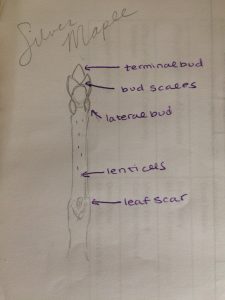
(Palmer, 2017)
It turns out that our tree friends play a fair game of hide and seek as well, as identifying them proved no easy task. However, referring to my previous blogs I remember that I could find a Silver Maple here, some basswood and maybe an oak or two. The two we managed to identify was the silver maple and basswood, as they were definitely the youngest and closest to the ground.
Something I gained from bringing Caleb along on this visit, was gratitude. The entire time we were there he was asking questions about Salmon Hole, the history, and phenology in general. To my surprise I was able to answer many of them, I had no idea how much I had learned about my place and the world around me. It rejuvenated my excitement for this assignment, and as we left I thought how lucky I am to be coming back shortly in March.
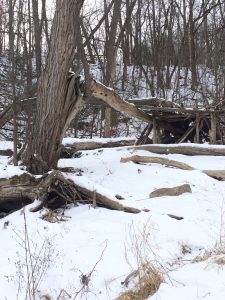
(Palmer, 2017)
